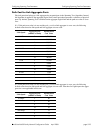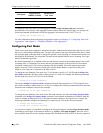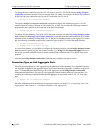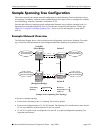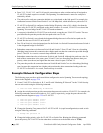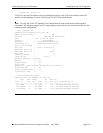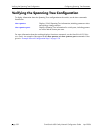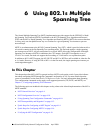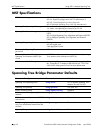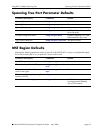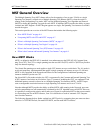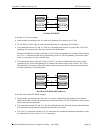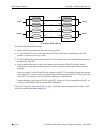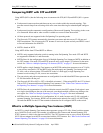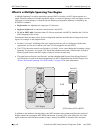
OmniSwitch 6600 Family Network Configuration Guide April 2006 page 6-1
6 Using 802.1s Multiple
Spanning Tree
The Alcatel Multiple Spanning Tree (MST) implementation provides support for the IEEE 802.1s Multi-
ple Spanning Tree Protocol (MSTP). In addition to the 802.1D Spanning Tree Algorithm and Protocol
(STP) and the 802.1w Rapid Spanning Tree Algorithm and Protocol (RSTP), MSTP also ensures that there
is always only one data path between any two switches for a given Spanning Tree instance to prevent
network loops.
MSTP is an enhancement to the 802.1Q Common Spanning Tree (CST), which is provided when an Alca-
tel switch is running in the flat Spanning Tree operating mode. The flat mode applies a single spanning
tree instance across all VLAN port connections on a switch. MSTP allows the configuration of Multiple
Spanning Tree Instances (MSTIs) in addition to the CST instance. Each MSTI is mapped to a set of
VLANs. As a result, flat mode can support the forwarding of VLAN traffic over separate data paths.
In addition to 802.1s MSTP support, the 802.1D STP and 802.1w RSTP are still available in either the flat
or 1x1 mode. However, if using 802.1D or 802.1w in the flat mode, the single spanning tree instance per
switch algorithm applies.
In This Chapter
This chapter describes 802.1s MST in general and how MSTP works on the switch. It provides informa-
tion about configuring MSTP through the Command Line Interface (CLI). For more details about the
syntax of commands, see the OmniSwitch CLI Reference Guide. For more information about Spanning
Tree configuration commands as they apply to all supported protocols (STP, RSTP, and MSTP), see
Chapter 5, “Configuring Spanning Tree Parameters.”
The following topics are included in this chapter as they relate to the Alcatel implementation of the 802.1s
MSTP standard:
• “MST General Overview” on page 6-4.
• “MST Configuration Overview” on page 6-10.
• “Using Spanning Tree Configuration Commands” on page 6-10.
• “MST Interoperability and Migration” on page 6-12.
• “Quick Steps for Configuring an MST Region” on page 6-14.
• “Quick Steps for Configuring MSTIs” on page 6-16.
• “Verifying the MST Configuration” on page 6-19.



